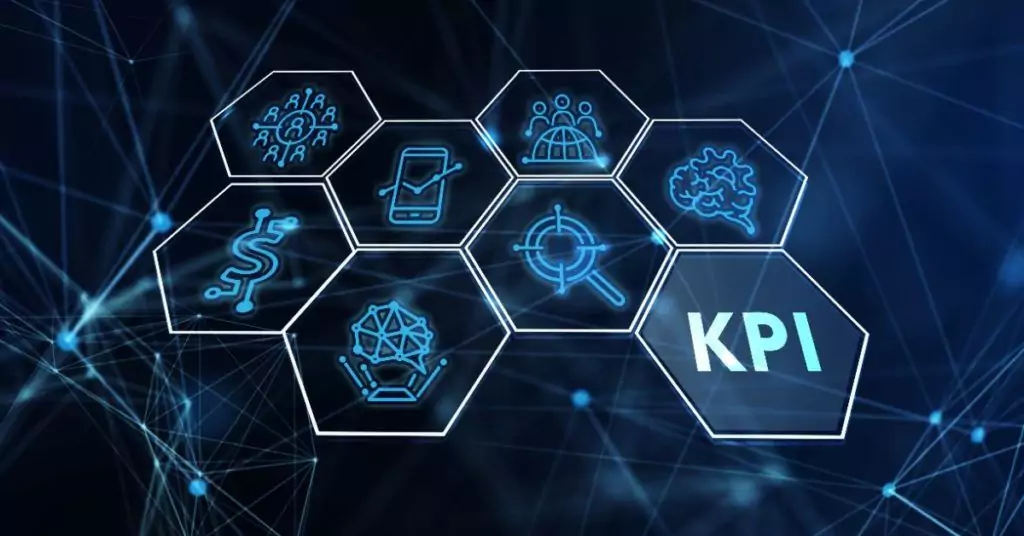If you’re not paying attention to your procurement KPIs, you should be.
At its core, procurement is not merely about acquiring goods and services; it’s a multifaceted process that involves strategic sourcing, supplier relationship management, risk mitigation, and cost control. Amidst this complexity, procurement KPIs serve as navigational tools, offering invaluable insights and benchmarks that empower organizations to gauge their procurement performance effectively.
What Are KPIs?
KPIs, or Key Performance indicators, guide businesses toward success by providing tangible measurements of progress and highlighting areas for improvement. KPIs are quantifiable metrics used to measure the performance of an organization, a department, or even an individual against specific goals or objectives.
KPIs should directly align with an organization’s objectives and provide meaningful insights into performance. Moreover, KPIs should be actionable and capable of driving improvement.
Why Are Procurement KPIs Important?
KPIs are crucial in evaluating progress towards achieving strategic objectives because they provide a clear, measurable indication of how effectively something is being achieved. KPIs not only measure success but also create alignment, foster accountability, drive performance improvement, and facilitate data-driven decision-making across all levels of an organization.
Well-defined Procurement KPIs play an instrumental role in guiding procurement towards optimized processes, improved supplier performance, cost savings, risk mitigation, and strategic decision-making. When you can reliably identify areas that need improvement, you can pinpoint precisely where to focus resources to help your team flourish.
Selecting the right KPIs is critical. Identifying and tracking the proper KPIs can mean the difference between success and failure for the procurement department.

6 Essential Procurement KPIs
With these six foundational procurement KPIs, you will have the data-driven insights to streamline processes, increase margins, and take your procurement to new heights.
1. Purchase Order Accuracy
This procurement KPI refers to the precision and correctness of the information contained within a purchase order. Purchase Order Accuracy measures how well the details specified in the purchase order align with the actual requirements of the purchasing entity and the agreements made with suppliers.
Elements of accuracy within a purchase order include:
- Correctness of Information: This involves ensuring that all details in the purchase order, such as item descriptions, quantities, prices, unit measurements, delivery dates, and terms and conditions, accurately reflect what was intended to be ordered.
- Compliance with Standards and Policies: Purchase orders need to adhere to internal standards and procurement policies set by the organization. Accuracy involves ensuring that the purchasing process follows established guidelines and regulations.
- Alignment with Agreements: Purchase orders often stem from negotiated contracts or agreements with suppliers. Accuracy in this context involves making sure that the purchase order aligns precisely with the terms and conditions outlined in those agreements.
2. Purchase Order Cycle Time
Purchase Order Cycle Time is a measure of the amount of time it takes to turn an approved purchase requisition into a purchase order that has been submitted to a supplier. A Purchase Order Cycle Time of 5 hours is generally regarded as the gold standard. Lower Purchase Order Cycle Times lead to smoother operations. And in third party procurement, lower Purchase Order Cycle Times typically translate to increased client satisfaction.
3. Supplier Lead Time
Supplier Lead Time (also called vendor lead time) measures the time it takes a supplier to fill an order, and typically does not include shipping time. More specifically, Supplier Lead Time is the time between when a supplier receives a purchase order and when the supplier has the order ready to ship. This purchasing KPI typically measures in days.
Your suppliers are a critical link in the procurement chain. Measuring Supplier Lead Time allows you to pinpoint the most efficient and reliable suppliers.
4. Supplier Compliance
Tracking Supplier Compliance to contract terms and conditions is critical. This supplier performance management KPI ensures that agreements with suppliers are being honored, reducing risks and ensuring that your organization receives the agreed-upon goods & services, pricing, terms, and service levels. Procurement metrics like on-time delivery, quality of goods or services, and supplier responsiveness provide insights into the reliability and effectiveness of supplier relationships. Tracking Supplier Compliance enables you to hold suppliers accountable, strengthen your vendor base, and ensure a consistent supply of high-quality products or services. Ultimately, you might be better off with stronger relationships with fewer vendors, than relationships with numerous vendors that you don’t know very well.
5. Total Cost of Ownership (TCO)
Total Cost of Ownership goes beyond the purchase price and includes all costs associated with procuring and using a product or service over its entire lifecycle. TCO encompasses acquisition costs, operating costs, maintenance, and disposal expenses. TCO analysis aids in making informed decisions by considering long-term expenses rather than just focusing on the lowest upfront price.
6. Cost Savings
Of course, every business wants to reduce costs. It’s all about purchasing the goods and services you need while paying the lowest possible price. The reality though, is that the ability to attain that perfect balance separates the highly successful procurement teams from the unsuccessful ones. This procurement KPI measures the amount of money saved through procurement activities, negotiated discounts, better contracts, or more efficient sourcing strategies. It showcases the direct impact of procurement efforts on the organization’s bottom line.
Procurement KPIs: A Guiding Light for Your Business
While these procurement KPIs are foundational, they are only the tip of the iceberg. Your organization will benefit from expanding upon these procurement key performance indicators to develop a set of KPIs specific to the needs of your unique business. Tailoring KPIs to align with the goals of your organization and continuously evaluating their effectiveness is key to leveraging them to drive procurement success.
Engaged in Complex Procurement?
Let’s face it, not all procurement is created equal. There’s a world of difference between ordering office supplies and purchasing materials and services with sophisticated technical requirements or managing the procurement for complex industrial projects or expediting materials from vendors across the globe.
Complex procurement demands more than standard solutions.
Current SCM is a cloud-based software-as-a-service (SaaS) that was purpose-built for complex procurement. We were born from the real-world experience of a leading industrial engineering firm who couldn’t find a procurement system that met their complex needs. So, they built their own.
Current SCM was explicitly designed to reduce errors between Engineers & Buyers by ensuring procurement professionals have access to the resources they need, including centralized procurement catalog(s), centralized procurement documentation, and centralized vendor management.
Current SCM encompasses activities that occur outside of the typical procure-to-pay process, and offers robust toolsets to support project procurement, third party procurement, technical procurement, and strategic procurement.
Current SCM provides a unified platform for procurement and materials management, offering comprehensive support for the planning, purchasing, and management of materials & services. With material and document tracking integrated into the Order and an Expediting dashboard within each Order, Current SCM provides a unique platform for Buyers and Expeditors.
And Current SCM was designed to drive collaboration among all procurement stakeholders.
Experience the difference. Contact Current SCM today to streamline your complex procurement processes.
